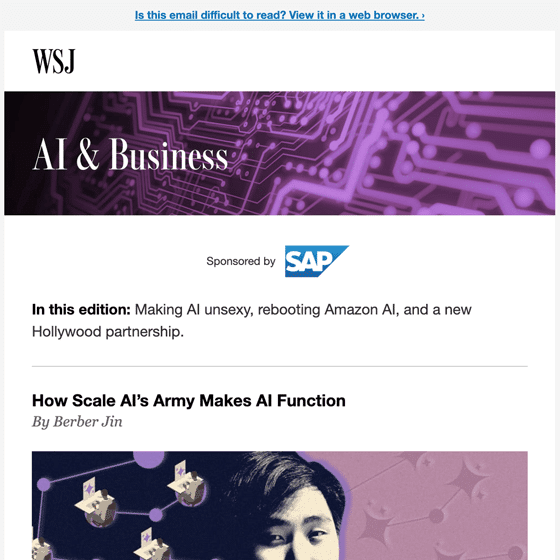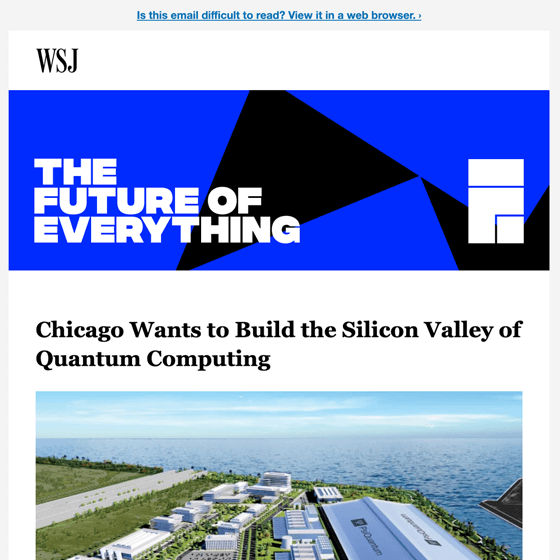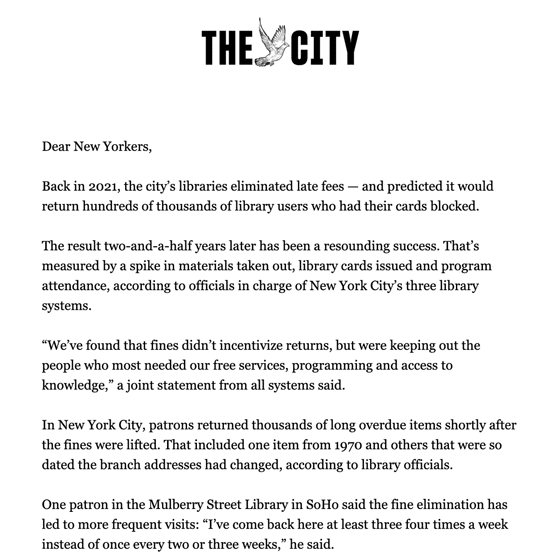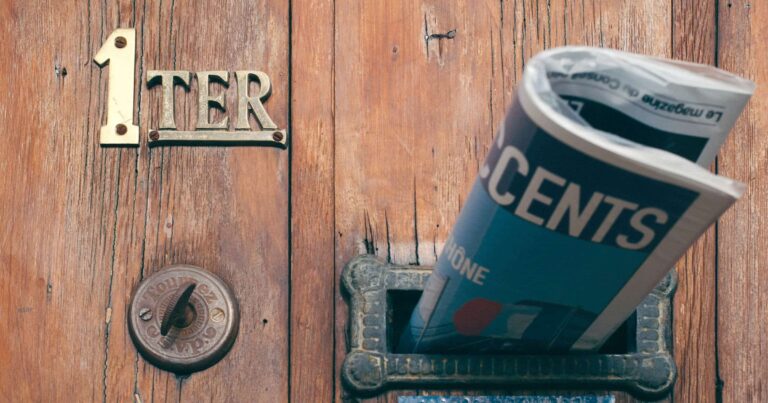Q & A: Leigh Kamping-Carder, The Wall Street Journal
The 99 Newsletter Project focuses on smaller publishers, especially local publishers, because those are the newsrooms I work with best.
However, there are good practices small newsrooms can learn from big news organizations. With more resources and staffing, they can try things that may be beyond the reach of small newsrooms. Also, large organizations must develop robust systems to manage the many moving parts that get the news out each day.
To get an inside look at how one large newsroom is approaching newsletters, I spoke with Leigh Kamping-Carder, Head of Newsletters at The Wall Street Journal.
In our conversation, we talked about the new AI & Business newsletter that launched in September 2024, surveying your audience, and how the newsletter game has changed over Leigh’s ten years at the Journal.
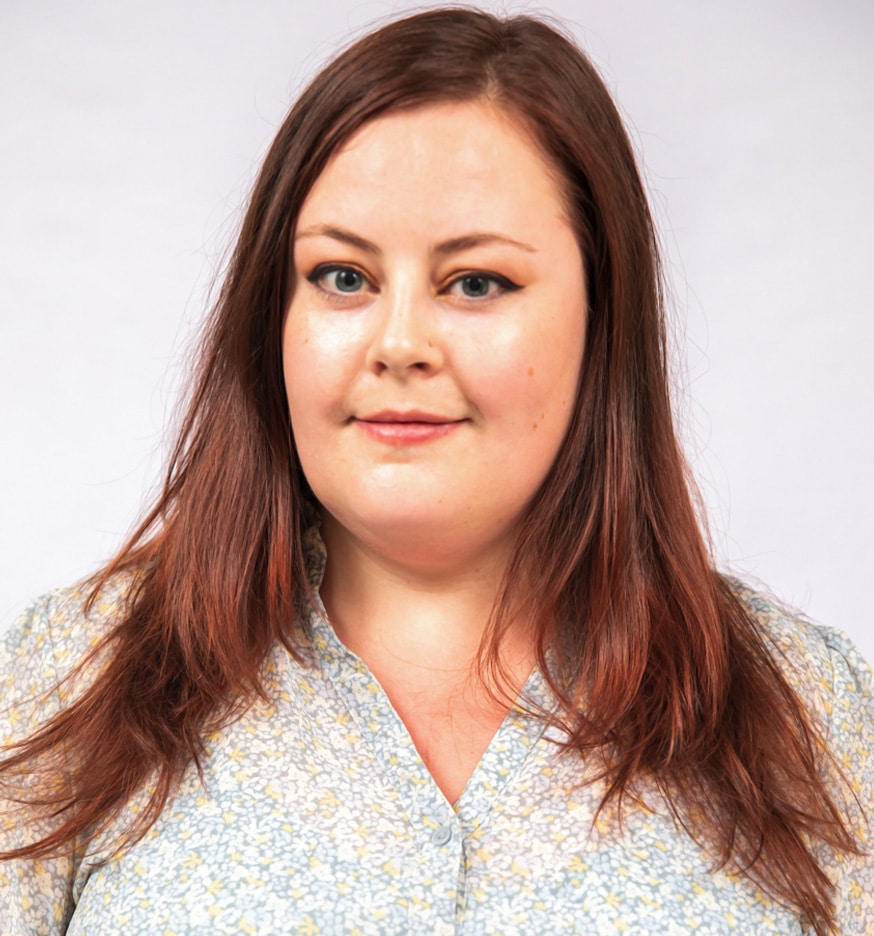
Meet Leigh Kamping-Carder
Leigh Kamping-Carder is the Head of Newsletters at The Wall Street Journal, overseeing its portfolio of newsletters, email courses and email alerts.
Previously, she was the deputy editor and, before that, digital director of “The Future of Everything,” a section that covers innovation and technology.
She joined the Journal in 2015 as the digital editor of “Mansion,” where she won several awards from the National Association of Real Estate Editors. As an editor and reporter, she has covered real estate for BrickUnderground and The Real Deal and legal news for Law360.
Her writing on arts and culture, real estate and other topics has appeared in the New York Observer, the Walrus, the Brooklyn Rail and others.
She received a Master’s degree in journalism from New York University. She is based in Brooklyn and grew up in Toronto.
Cory Brown: The Wall Street Journal has a new AI newsletter that launched in September, correct? How is it different from other AI newsletters out there, and how did the idea come about?
Leigh Kamping-Carder: Obviously, AI is a huge topic of conversation and concern. This is true for everyone, but particularly among the Journal’s business-minded readers. We have a lot of AI coverage, not just from our tech bureau, but from careers to personal finance and across the board. So I thought about how we can gather all of that coverage and put it somewhere that people can access it easily.
I did a lot of research looking into other AI newsletters, and there are a ton out there. Most of them are from indie writers, and there are not as many as you would expect from legacy publications.
from the library
Wall Street Journal AI & Business Newsletter September 2024
See the full AI & Business email and other newsletter examples in the 99 Newsletter Project Library.
I found the majority of them were speaking to an audience who was already savvy with AI. They’re already using prompts. They already know how to use all the tools. They’re working in tech, if not working directly in AI.
There wasn’t a lot out there for a savvy audience that wasn’t directly using AI or involved in AI every day. But these people still need to know about how to advance their career, run a business, or to be an executive. That was the tack we took. We have really great coverage and speak to our audience, especially people who need to know about AI but aren’t directly involved in it.
I think a lot of the other AI newsletters out there are also hype newsletters for AI. They’ve fully bought into it. We approached this with a lot of journalistic rigor. The idea is not to be a cheerleader or a doomsayer, but really interrogate things and be smart about it.
How long did that research process take from, “Hey, let’s try this new thing,” to the first newsletter going out into the world?
This process definitely took months. In part, that was because we were in the midst of hiring an AI editor, so we wanted to have that person in place before we launched. Plus, we had logistical issues like summer breaks. It was definitely months.
The main questions we typically ask are, “What are the signals that an audience wants this?”
We also ask, “Is a newsletter the best form for this?”
In this case, we did a couple test runs before the launch. You need to know how long it actually takes to produce this weekly newsletter, and things like that.
You have a pretty hefty portfolio of newsletters, right? So that decision to add a new one isn’t something that’s considered lightly. Are there any kind of red flags that make you pause or think, “I don’t think we can do this right now?”
We do a cost-benefit analysis with everything that we launch, including every newsletter. The main questions we typically ask are, “What are the signals that an audience wants this?”
Those positive signals might be from coverage that’s getting a lot of attention and engagement or columnists with a big following and really engaged fan base. This indicates an audience is interested in this area.
We also ask, “Is a newsletter the best form for this?”
Sometimes a better idea is an automated alert, a new column, or some other way of grouping the coverage. Because as you know, a newsletter is a lot of work every week — and it continues in perpetuity. We want to make sure we have the right form.
We also ask about staffing. There’s a writer and editor, but also backups for when those people are inevitably out. That’s important.
I noticed something that I can’t recall seeing before. I think it’s really neat. The Journal adds language for the view in browser link. It says, “Is this difficult to read?” which is so much more useful than a normal browser link.
We changed that maybe six months or a year ago. We were getting complaints from some people that they couldn’t read the headlines. When looking at all the people who read our newsletters, it was a tiny, tiny fraction.
But they were very vocal and understandably so. If you can’t read the news, that’s a bad experience.
We have since fixed it, but in the interim, one workaround was to click the view in browser link. We tried to make that language a little more noticeable and accessible so that we could head off some complaints or bad experiences. When people couldn’t see the email right, they could click into it.
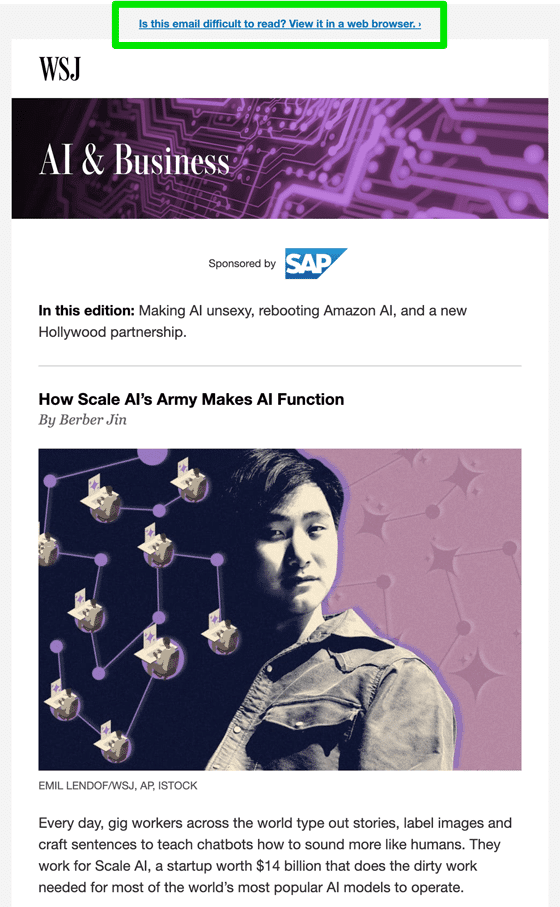
Looking at your career history, you’ve been at the Journal for quite a while now, right?
It will be ten years in March.
Congratulations! How did you come into journalism? How did you find your path at the Journal?
I had always been a writer. I thought I was going to write fiction and poetry. In college, I took a creative nonfiction class and really loved just being able to talk to people and ask them any questions that I wanted.
I continued to grad school for journalism, in a program that focused on cultural journalism. Then I graduated three months after Lehman Brothers collapsed [in 2008]. People weren’t sure journalism was going to continue.
I wound up getting a job as a reporter at a legal newswire. After that I covered real estate at a couple different publications, so I came to the Journal through their luxury real estate section, which is called “Mansion.” I worked on “Mansion” for a few years, and while I was there, I was helping out with digital production for a special section called “The Future of Everything,” that covers innovation and tech.
When that section expanded, I was hired as an editor. Part of my new role was launching “The Future of Everything” newsletter, one of the first personality-driven newsletters from the Journal. It was more like what you might think of as a newsletter today, rather than a roundup of links.
We turn this quantitative and qualitative data into takeaways. We use the takeaways to talk to the writers and editors about what to focus on. In some cases, they lead to a real overhaul of a newsletter.
“The Future of Everything” newsletter grew to be our third biggest newsletter after our two flagships. When the Head of Newsletters position opened up, I had always really loved newsletters as a form so I applied. I started that job in January 2022.
Going all the way back to launching “The Future of Everything” newsletter to now, what are some things that changed and surprised you over that time?rising in the three months since The Trajectory launched?
Newsletters have gotten more sophisticated. When I very first started doing newsletters at the place I worked before the Journal, it really was like, “Let’s just round up the stories that we’ve done this week and send them to people’s inboxes.”
And now you see so much more creativity with newsletters. There’s so much more personality.
The rise of independent newsletters has been really interesting to see. There’s just so many more newsletters and there’s so much more competition. People’s inboxes are inundated. That’s been a big change as well.
People have never loved email, but I think every year we’re seeing more and more coming into the inbox. So that makes it even harder to speak to people through newsletters.
It’s interesting to me because there’s always been plenty of vocal people who think email is boring and dead. But for me personally — as a consumer — the thing is that email just works. That’s what I like about it.
Contrast that with the way social media has become so algorithmically driven. I don’t see stuff from people I follow, and I don’t know who might see what I post. It’s not under my control. But I feel like with mail or email, I have a little bit more control over what I’m experiencing from a consumer.
Yeah, absolutely. Definitely control over who gets it. Much more control over when they get it. Maybe not when they read it, but when they get it.
There’s also a lot of innovation you can do. Email allows opportunities for innovation that you can’t necessarily do with other distribution channels.
We can introduce a new section to a newsletter or change the template or try something new easily, relative to other placements. We can try it and track it over several weeks and see if it works. At a big company like The Wall Street Journal, working in newsletters is fun because you can try things relatively easily.
Do you have any advice for more junior people having a hard time sharing information and insight with reporters or editors?
It’s a challenge to be an early career person and communicate these things to people who might be more senior or have a whole lot of other priorities. I think it’s really important to start by listening to the other person.
Sometimes the issue is not that they don’t trust you or they don’t want to listen to you. The issue is that they have a million things on their plate. They just don’t have the capacity.
In that case, the response isn’t to grab their collar and tell them about the data. It might be asking if there is a deputy that I can talk to. Or is there some way that we can make this newsletter work better for you so that you do have the time to look at the data?
from the library
The Future of Everything
See the full Future of Everything email and other daily newsletter examples in the 99 Newsletter Project Library.
I think if you can tie what you’re saying to larger newsroom goals, that can also be helpful. So it’s not you who is saying, “hey, these numbers say this thing,” but someone higher up. The top editor, the president or the CEO has made this an important goal, and that’s what we should be working on. “What I’m sharing with you will help you meet those bigger goals.”
Can you share a little bit about how you approach surveys?
This was our most significant survey project. Certainly, in my tenure, we had worked with some of our customer research colleagues on some key newsletters. But for this batch, we surveyed every single one of our newsletter subscribers, for every one of our newsletters.
I have to shout out Liz Webber, who works on my team and was really the leader of this effort.
We decided to start with several questions we would ask across all newsletters, so that we could more easily compare some results. For example, if we ask for a satisfaction rating, what is good? What’s bad? We don’t know without a baseline, so we wanted to ask that across the board.
Get the next Q&A as soon as it drops +
real newsletter breakdowns, step-by-step guides and more
Then we had some specific questions by newsletter. Questions to determine things like, is this working? Is it not working? Do people want more of this or more of that? We also worked with the writers and editors. In some cases, they had questions not just about the newsletter, but about their coverage and things like that.
It was a mix of quantitative scores, where readers would rank things on a numerical scale. We had some open-ended questions as well. Again, shout out to Liz, who read every single open-ended response—thousands upon thousands of responses.
Then we turn this quantitative and qualitative data into takeaways. We use the takeaways to talk to the writers and editors about what to focus on. In some cases, they lead to a real overhaul of a newsletter.
I definitely want to do it again. It was a months-long undertaking, so I don’t think that we’ll be able to do it frequently, like every month. But we certainly want to repeat it.
In the case of an overhaul, how does the process unfold when you need to make significant changes. You have this survey data. What’s the process of taking those takeaways, organizing them, and prioritizing them? Because you can’t do them all, so what rises to the top?
In a lot of cases, there were clear signals from the readers about what they wanted. I know this sounds strange, but it wasn’t super hard to identify what we should be doing.
One example was with our sports newsletter. I think Journal readers like that our newsletter has really distinctive sports coverage. Our sports newsletter is written by our sports bureau chief. In the past, it was a written through kind of newsletter with in-line links to stories.
We found readers wanted a roundup of our sports coverage as well, so we changed the template. There is still writing from the editor at the top, but there’s also more Journal stories linked in the email.
Not to get too far in the weeds, but you can see it’s a headline and dek, and it’s much more prominent now. It’s easier to navigate all the stories we’ve published in a week.
That was a pretty easy change, but it was very clear from the surveys. When people got the sports newsletter, they expected to see every sports story we had published over the past week. So, we made that clear in the newsletter.
That’s awesome because I tell people that if a fix is easy and it works, that’s great. There’s no benefit in misery.
I think once we had the survey data, it was easy to talk to the editors of our newsletters to say, “this is what people are asking for.” It’s hard to argue with that.
You mentioned how much you appreciate the newsletter format and how different people approach newsletters. What’s a newsletter you really want to gatekeep, but you’re okay with sharing here?
Do you know The City? The local newsroom in New York? They have a newsletter called The City Scoop, which I think is really well done. I want my news diet to include local news. They do a really good job.
from the library
The City Scoop
See the full The City Scoop email and other daily newsletter examples in the 99 Newsletter Project Library.
You get the big stories of the day. There’s also a little weather section. I feel like more newsletters could have weather, especially morning newsletters. There’s a little calendar at the end. They have nice little touches that make it feel friendlier than just a straight news newsletter.
And they say, “Love, THE CITY” at the end.
It’s very clean and easy to read. There are very few graphics or extra adornment. I think a lot of newsletters try and cram in a lot of boxes and colors and so much stuff that makes it harder to read the newsletter. I appreciate that it’s just very clean and to the point.
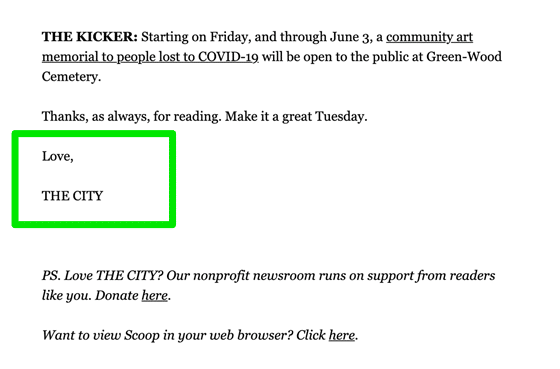
What’s been your most meaningful moment at the Journal?
If I’m being honest, this has nothing to do with newsletters. I published a personal essay in April about my heart condition. It was not something that I ever thought I would write about publicly, and certainly not in a publication that is as big as the Journal. Not to mention read by all my co-workers.
But I got an incredible response. It’s not something that I ever thought the Journal would publish, because it’s so personal. But my editors were really supportive and receptive. It’s personally very meaningful.
It takes a ton of vulnerability to share that. It’s impressive and awesome. One of the best answers I’ve gotten from years of asking that question. Thank you.
I have one more question that is completely out of left field. Are you Canadian?
I am Canadian.
Can you share with me a Canadian snack or treat or something that you really miss that you can’t get in New York? Or is hard to get in New York?
The first one is Coffee Crisp, which is a chocolate bar. Have you heard of it?
For my 40th birthday, we flew to Seattle and drove up to Vancouver. And I think we got a Coffee Crisp in Vancouver, and it was good!
It probably sounds really gross when you describe it. It’s a wafer wrapped in chocolate that has a coffee flavor to it.
And it’s really good! Ask any Canadian and they will remember this advertising campaign. The slogan for Coffee Crisp was, “How do you like your Coffee…? Crisp!” It’s embedded in my brain, for all time. And yeah, they’re really good. I haven’t ever seen them here, even in New York.
The other one is butter tarts. You haven’t come across those have you?
I have not, but my parents raved about them after a visit to the Canadian Niagara Falls last year.
They are a tart, almost like pecan pie, with a similar pastry crust. It’s like the part of the pecan pie that’s just the gooey stuff. No nuts, but more of a gooey kind of consistency. It’s not as solid. It’s runnier.
You can also get them with raisins. It’s very popular to have raisins in them. I personally like just the original. No nuts, no raisins. The raisin versus no raisin divide is considerable. People have strong preferences over the other types. But yeah, butter tarts are delicious.
This Q&A was edited for length and clarity.
Get more expert insights for building
strong relationships with your audience in the 99 Newsletter Project newsletter:
You can opt-out at any time.
For more details, please review the Terms of service and Privacy Notice.

